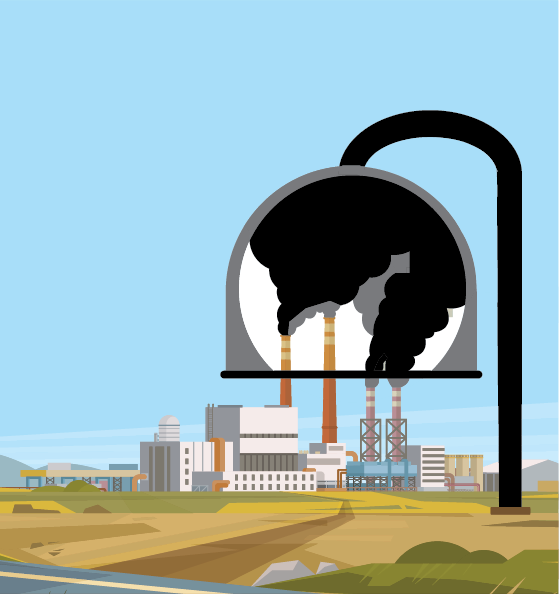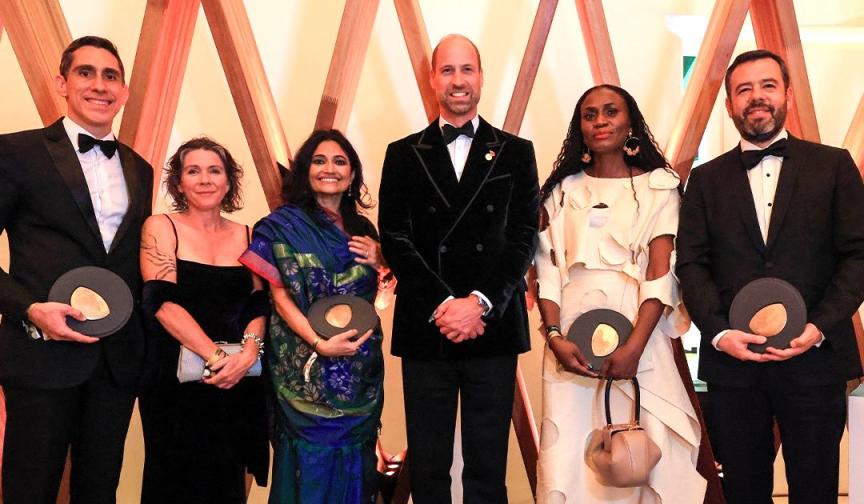A look into the arguments for and against carbon capture usage and storage.
Elon Musk is renowned for his tweets. Recently, he announced he will be giving USD 100 million to anyone who can come up with the best carbon capture technology. And right after that, numerous discussions have emerged on the pros and cons of carbon capture technology. Some are vouching for this to be a saviour of planet Earth’s ecosystem, whereas others think that this is just a costly, ineffective mechanism. Let’s dig a bit deeper and see what carbon capture technology is all about.
WHY WE BADLY NEED A SOLUTION
Around 50 billion tons of carbon dioxide and other greenhouse gases are released into the atmosphere each year by people. That number needs to be zero by 2050, according to a number of interconnected and more dire reports from the Intergovernmental Panel on Climate Change, in order to prevent the worst consequences of a warming planet. Nevertheless, emissions have reached such high levels as a result of decades of delay in the face of this scientific consensus that reductions from actions like boosting energy efficiency and switching to renewable electricity sources will only go so far. According to Julio Friedmann of the Center on Global Energy Policy at Columbia University, “We can achieve 40 gigatons.” That indicates that you require 10 gigatons of removal.
By injecting the captured greenhouse gases back into the earth, carbon capture and storage (CCS) includes absorbing, transferring, and storing greenhouse gas emissions from fossil fuel power plants, energy-intensive businesses, and gas fields.
CARBON CAPTURE – A DEBATABLE TECHNOLOGY
By injecting the captured greenhouse gases back into the earth, carbon capture and storage (CCS) includes absorbing, transferring, and storing greenhouse gas emissions from fossil fuel power plants, energy-intensive businesses, and gas fields. Although CCS is being suggested in many different contexts, this fact sheet concentrates on the types of CCS that are connected to the infrastructure for fossil fuel generation. Not all of what is stated here is applicable to all CCS applications.
Supporters of CCS assert that it may be used to lessen the impact of emissions-intensive businesses including the manufacture of steel, cement, and chemicals. CCS won’t ever be a ‘zero-emissions’ solution, especially if it’s used in conjunction with coal and gas projects that produce a lot of pollution.
According to the International Energy Agency, a Paris-based intergovernmental energy organisation, there are already 21 large-scale commercial Carbon Capture Usage and Storage (CCUS) projects throughout the world that remove carbon dioxide from manufacturing emissions. In 1972, the first one was established.
As per Howard Herzog, a senior research engineer at the MIT Energy Initiative and author of the book ‘Carbon Capture,’ the initial CCUS technology was utilised for improved oil recovery, which entails pumping carbon dioxide into an oil field to enable oil companies extract more oil from the ground. Carbon capture technology wasn’t investigated for climate mitigation efforts until the 1980s, and even then, Herzog claims, it was “primarily lone wolves.” He claims that “activities really revved up” by the 1990s.
NEW DEVELOPMENTS IN THE FIELD
To improve the performance of present carbon capture methods, scientists and researchers have been relentlessly working. “Over the past ten years, there have been a number of developments and advancements that have allowed us to save more energy and have new carbon capture processes cost up to 70% less,” Professor of industrial and process systems engineering at the Canadian Academy of Engineering and co-founder of the University of Regina’s Clean Energy Technologies Research Institute have recently told a global media outlet. These include brand-new solvents (and their combinations) as well as new process equipment, such as new columns, catalysts and more.
Another scientist is experimenting with a type of sponge “with a great affinity for carbon dioxide”. “The CO2 is eliminated if air is passed through the sponge. We must heat the material until it is completely saturated with CO2 before we can extract pure CO2, which we can then store. We can restart now that the sponge is empty,” he says.
Another group of scientists have created a standalone device to remove carbon dioxide from the atmosphere. “We believe that the wind alone is sufficient to move the air, and our design intends to just be quietly standing in the wind, similar to a tree. Everyone’s a machine out there right now, they are sucking or pushing carbon dioxide with fans and blowers,” they have said. The technology is still in its early stages even though it has been tested on campus.
WHAT THE CRITICS ARE SAYING
Everything ultimately boils down to money. Many argue that regulatory systems are necessary, under which everyone who wants to extract carbon must first demonstrate that they have stored an equivalent quantity. “By all means, go for the less expensive option initially. You have no justification if you don’t have a less expensive method because this one will work,” one said. Our industries are developing with clean, green technologies. We are switching to renewable energy sources, we are using the energy we generate with incredible efficiency and we are recycling, reusing, and recovering. Our emissions of greenhouse gases are declining. However, it might not be enough. The decarbonisation toolbox also includes a last set of tools, or ‘last resort,’ known as ‘negative emissions technologies,’ which are those that store or sequester more greenhouse gas emissions than they produce. These can be divided into two categories: natural solutions like reforestation and afforestation, and technical ones like soil carbon sequestration, improved weathering, biochar, and direct air carbon capture and storage.
Technology or even organic processes are not required for carbon capture. Long before people or other forms of life appeared on the earth, carbon dioxide was being sequestered from the atmosphere through enhanced weathering, a low-tech process that speeds up the natural chemical interaction between carbon dioxide in the atmosphere and surface minerals. More surface minerals, especially those high in calcium and magnesium, can be exposed to the atmosphere to speed up this process by being dug up or crushed to a fine powder. Mining is one sector where that process occurs frequently.
EXPLORING OTHER ALTERNATIVES
Many of the critics have voiced their support for alternatives to carbon capture, such as forestation, agroforestry among many others. Around the world, there are already many programs in progress to plant trees. For instance, the Bonn Challenge has already succeeded in reforesting 150 million hectares of degraded and deforested landscapes in nations like Brazil, Burkina Faso, India, and Cameroon. The Bonn Challenge aspires to reforest 350 million hectares of degraded and deforested landscapes by 2030. Over one-fourth of the carbon dioxide currently in the Earth’s atmosphere amounting to 205 gigatons of carbon could be stored in 0.9 billion extra hectares of trees that could be cultivated on existing feasible land that isn’t already occupied by forests, agriculture, or urban areas, according to one study.
The decarbonisation toolbox also includes a last set of tools, or ‘last resort,’ known as ‘negative emissions technologies,’ which are those that store or sequester more greenhouse gas emissions than they produce.
But planting trees isn’t as simple a solution as it would seem. “We all love trees, and it’s a beautiful idea that by planting a tree, we can prevent climate change,” says Duncanson. It’s also very doable and simple to include into economic solutions. However, the truth is that it is utterly unable to resolve the full issue.
To begin with, it’s unclear how much carbon will be removed: According to Duncanson, some studies used calculations based on the highest theoretical amount rather than an average. Not every location designated for potential reforestation will prove to be appropriate for planting trees, and trees cannot be planted simply anywhere. It is possible that the local temperature or soil are unfavorable, making it unlikely that planting trees there would succeed or won’t have a positive effect on the surrounding ecosystems. Practical concerns include where such a sizable reforestation effort’s seeds and seedlings will come from, if there is sufficient genetic diversity, and how many of those seeds can be extracted without endangering the survival of current forests. Last but not least, it takes a long time for trees to grow, and the biggest trees, which also store the most carbon, can take decades to mature – decades we probably don’t have.
Despite these worries and restrictions, reforestation can actually help our environmental situation rather than making it worse given the vast array of ecosystem services that trees supply to humans, including clean air, water, stable soil, oxygen, shelter, food and building materials.
According to Jennifer Wilcox, “Carbon removal is a chance to go back.” That doesn’t mean returning to carbon dioxide levels from before the Industrial Revolution or even from before 1970 because we have advanced too far for that at this point. Without any additional carbon emission reductions, we are past the point where using just negative emissions technologies may save us. But these methods and technology can give us some time until we can move away from the 412 parts-per-million wall.
Wilcox also said, “We’ve got to take that back out, if we want to go back down to reasonable levels of CO2 concentrations in the atmosphere.” However, we also have to consider the rates at which we continue to dump now and in the future. We must both get rid of the carbon and prevent adding any more to the atmosphere in the first place.
















